BMW 2 Series Active Tourer VS Dacia Spring
BMW 2 Series Active Tourer
The BMW 2 Series Active Tourer offers a blend of versatility and modern design, making it an ideal choice for drivers seeking practicality without compromising on style. Its spacious interior and advanced technology features ensure a comfortable and connected driving experience. With a focus on efficiency and performance, this vehicle stands out as a refined option in the compact MPV segment.
more informationDacia Spring
The Dacia Spring stands out as an affordable and environmentally friendly option in the electric vehicle market, combining practicality with a compact design ideal for urban settings. Its minimalist interior, while basic, provides all the essential features needed for a comfortable drive, reflecting its cost-effective approach. The vehicle's performance suits city driving, making it an appealing choice for those seeking an entry-level electric car.
more information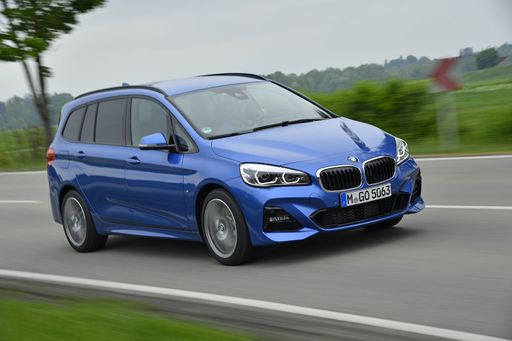 @ press.bmwgroup.com
@ press.bmwgroup.com
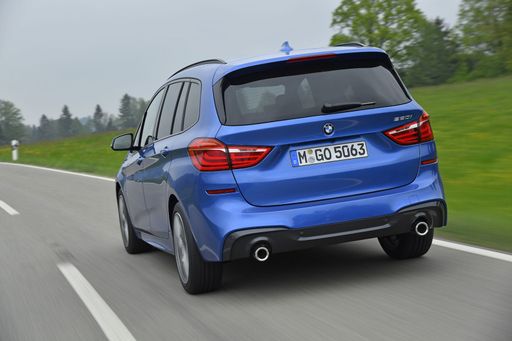 @ press.bmwgroup.com
@ press.bmwgroup.com
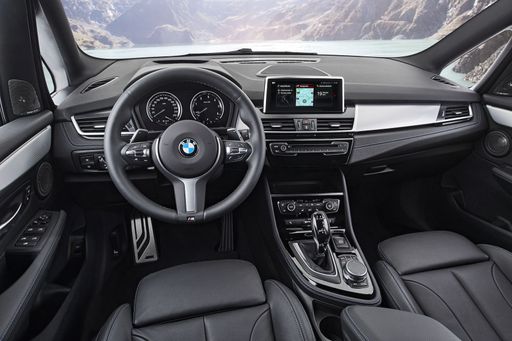 @ press.bmwgroup.com
@ press.bmwgroup.com
 @ press.bmwgroup.com
@ press.bmwgroup.com
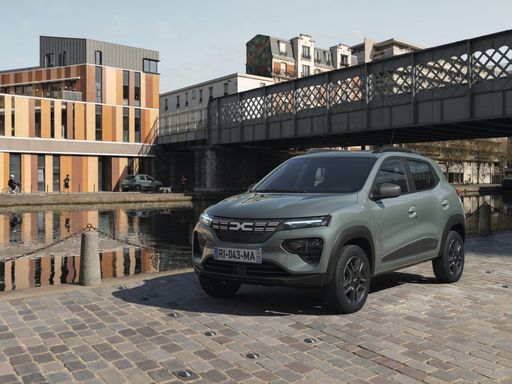 @ dacia-presse.de
@ dacia-presse.de
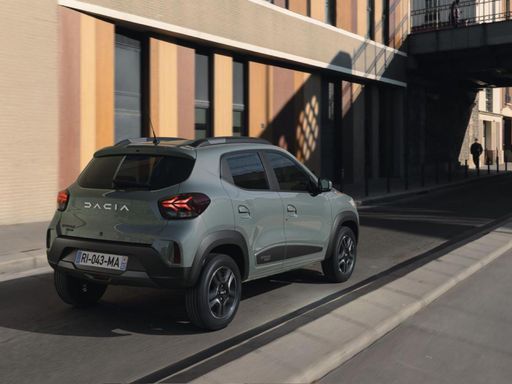 @ dacia-presse.de
@ dacia-presse.de
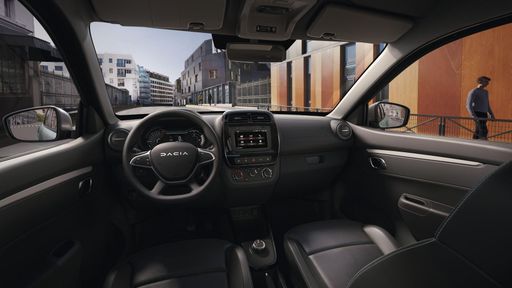 @ dacia-presse.de
@ dacia-presse.de
Costs and Consumption |
|
|---|---|
|
Price
about 33100 - 51300
$
|
Price
about 15600 - 18400
$
|
|
Consumption L/100km
0.8 - 6.2
L
|
Consumption L/100km
-
|
|
Consumption kWh/100km
-
|
Consumption kWh/100km
13.2 - 14.1
kWh
|
|
Electric Range
88
km
|
Electric Range
225 - 228
km
|
|
Battery Capacity
14.2
kWh
|
Battery Capacity
26.8
kWh
|
|
co2
19 - 140
g/km
|
co2
0
g/km
|
|
Fuel tank capacity
45 - 54
L
|
Fuel tank capacity
-
|
Dimensions and Body |
|
|
Body Type
MPV
|
Body Type
SUV
|
|
Seats
5
|
Seats
4
|
|
Doors
5
|
Doors
5
|
|
Curb weight
1545 - 1920
kg
|
Curb weight
1030 - 1050
kg
|
|
Trunk capacity
406 - 470
L
|
Trunk capacity
308
L
|
|
Length
4386
mm
|
Length
3701
mm
|
|
Width
1824
mm
|
Width
1583
mm
|
|
Height
1576
mm
|
Height
1519
mm
|
|
Payload
465 - 505
kg
|
Payload
265 - 285
kg
|
Engine and Performance |
|
|
Engine Type
Petrol, Diesel, Diesel MHEV, Petrol MHEV, Plugin Hybrid
|
Engine Type
Electric
|
|
Transmission
Automatic
|
Transmission
Automatic
|
|
Transmission Detail
Automat. Schaltgetriebe (Doppelkupplung)
|
Transmission Detail
Reduction Gearbox
|
|
Drive Type
Front-Wheel Drive, All-Wheel Drive
|
Drive Type
Front-Wheel Drive
|
|
Power HP
122 - 326
HP
|
Power HP
44 - 65
HP
|
|
Acceleration 0-100km/h
5.5 - 10.3
s
|
Acceleration 0-100km/h
13.7 - 19.1
s
|
|
Max Speed
195 - 241
km/h
|
Max Speed
125
km/h
|
|
Torque
230 - 477
Nm
|
Torque
113 - 125
Nm
|
|
Number of Cylinders
3 - 4
|
Number of Cylinders
-
|
|
Power kW
90 - 240
kW
|
Power kW
33 - 48
kW
|
|
Engine capacity
1499 - 1998
cm3
|
Engine capacity
-
|
|
Top speed
195 - 241
km/h
|
Top speed
125
km/h
|
General |
|
|
Model Year
2024
|
Model Year
2024
|
|
CO2 Efficiency Class
E, D, B
|
CO2 Efficiency Class
A
|
|
Brand
BMW
|
Brand
Dacia
|
BMW 2 Series Active Tourer
Introduction to the New BMW 2 Series Active Tourer
BMW has consistently set benchmarks in the automotive world by combining luxury with innovative engineering. The latest BMW 2 Series Active Tourer is no exception, offering an exciting blend of advanced technologies and efficient design. This model is particularly noteworthy for those seeking versatility without compromising on performance or comfort.
Powertrain Variability and Efficiency
The BMW 2 Series Active Tourer offers a remarkable range of engine options designed to cater to diverse driving preferences. With engines ranging from efficient three-cylinder options to more powerful four-cylinder variants, drivers can select configurations from traditional petrol to cutting-edge plug-in hybrids. The fuel efficiency is impressive, with consumption figures as low as 0.8 L/100 km for the hybrid variants and up to 6.2 L/100 km for gasoline models.
Innovative Hybrid Technology
One of the standout features of the BMW 2 Series Active Tourer is the integration of advanced hybrid technology. With models like the 225e and 230e, the vehicle boasts an electric range of up to 88 kilometres, allowing for completely emissions-free urban driving. These plug-in hybrid models combine an efficient petrol engine with an electric motor to deliver a total power output of up to 326 PS.
Design and Comfort Features
The exterior of the BMW 2 Series Active Tourer mirrors the brand's iconic design language, featuring sleek lines and a modern profile. Inside, the spacious cabin accommodates five passengers comfortably, with a high-quality interior finish that emphasizes luxury. Clever design allows for ample storage space, with a boot capacity extending up to 470 litres, ensuring practicality for family trips and adventures.
Advanced Safety and Convenience Systems
Safety is paramount in the new BMW 2 Series Active Tourer. The vehicle is equipped with state-of-the-art safety technologies including adaptive cruise control, lane-keeping assistance, and collision warning systems. Additionally, the car features an intuitive infotainment system, ensuring connectivity and entertainment on the go.
Cost and Efficiency Analysis
The pricing for the BMW 2 Series Active Tourer starts from €35,800, scaling to €55,450 depending on the model and options. Cost-efficiency is also reflected in the monthly running costs, ranging from €1073 to €1292, making it a competitive option in its class. CO2 emissions have been optimized, ranging from 19 to 140 g/km, aligning with BMW's commitment to reducing environmental impact.
Conclusion
The BMW 2 Series Active Tourer strikes an impressive balance between performance, efficiency, and practicality. Its host of innovative features and variety of engine options make it a versatile choice for both urban commuters and long-distance drivers. Whether prioritising sustainability with a hybrid model or enjoying the robust performance of a petrol engine, the 2 Series Active Tourer offers something for every discerning motorist.
Dacia Spring
The Revolution of Affordable Electric Mobility: The Dacia Spring
The automotive world has witnessed remarkable advancements in electric vehicles (EVs), with the Dacia Spring emerging as a noteworthy contender in the affordable segment. Combining efficiency, affordability, and practicality, the Spring offers an intriguing prospect for eco-conscious individuals and city dwellers alike.
Powertrain and Performance: A Look Under the Hood
The Dacia Spring is equipped with an electric motor that delivers between 44 to 65 PS, translating into a versatile driving experience tailored to urban landscapes. It operates on a front-wheel-drive system, ensuring a familiar and manageable handling experience.
Dacia Spring's electric engine is paired with an automatic transmission, utilising a reduction gearbox. This setup allows for smooth acceleration and a top speed of 125 km/h, ensuring that everyday driving scenarios are handled with ease.
Efficiency and Range: Eco-Friendly without Compromise
Efficiency is a cornerstone of the Dacia Spring's design, boasting an energy consumption of just 13.2 to 14.1 kWh per 100 km. When fully charged, its 26.8 kWh battery offers a respectable range of 225 to 228 km, making it ideal for daily commutes and short trips.
Furthermore, the Spring takes pride in its commendable CO2-efficiency class A, emphasising its commitment to reducing environmental footprint with a zero-emission profile.
Design and Practicality: Compact yet Comprehensive
Lying in the SUV category, the Dacia Spring is compact with dimensions of 3701 mm in length and 1583 mm in width, making it a perfect match for urban environments where space is at a premium. Despite its modest size, it provides a generous boot space of 308 litres, ensuring practicality isn’t sacrificed.
Comfort and Interior: For the Everyday Journey
The Dacia Spring comfortably seats up to four passengers. The cabin offers a minimalist yet functional design, available in multiple trim lines including Essential, Expression, and Extreme, allowing customers to choose according to their taste and requirement.
With its ergonomic layout and simplicity, the interior is crafted to enhance the driving experience by focusing on essential needs, avoiding unnecessary distractions.
Affordability and Accessibility: Breaking Barrier
The Dacia Spring stands out in the electric vehicle market due to its affordability, with prices ranging from 16,900 to 19,900 €. This ensures that environmentally friendly transportation is accessible to a broader audience.
Additionally, the Spring allows for cost-effective maintenance and operational expenses, offering monthly running costs between 570 to 599 € and cost per km between 22.8 to 24 cents, making it an economical choice in the long run.
Final Thoughts: The Future of Urban Mobility
In summary, the Dacia Spring serves as a testament to how electric vehicles can be both affordable and practical, without compromising on essential features. Whether it is for the eco-conscious urbanite or those looking for a cost-effective daily driver, the Spring is positioned as a viable solution for navigating the future of urban mobility.
